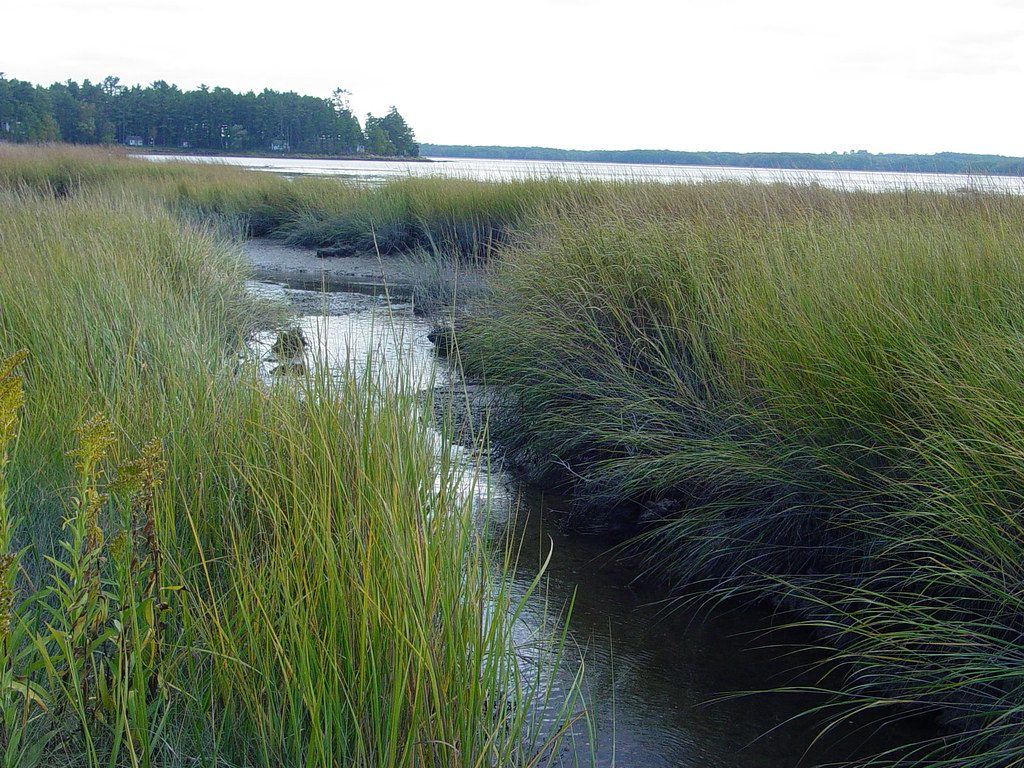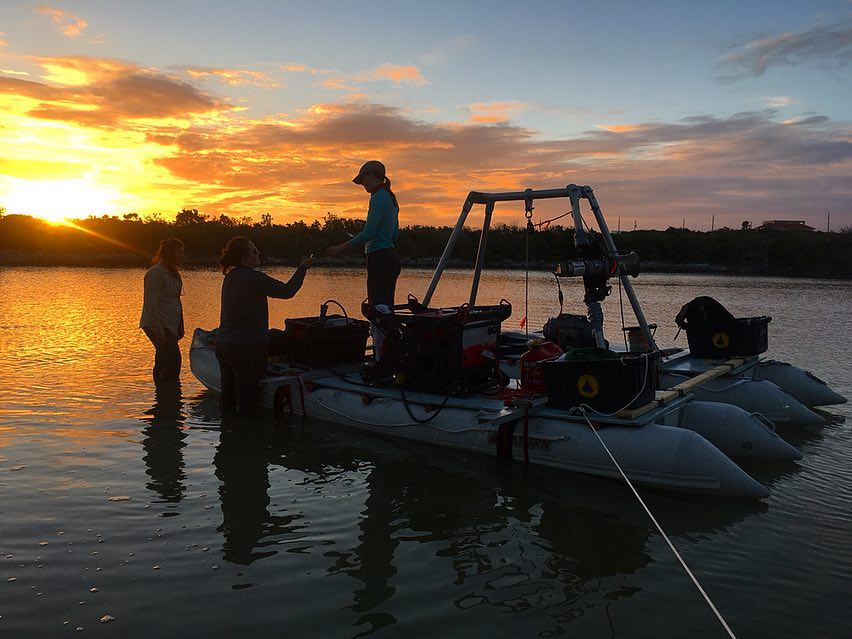
Paleohurricane Reconstructions
How has hurricane frequency changed over the past millennium?
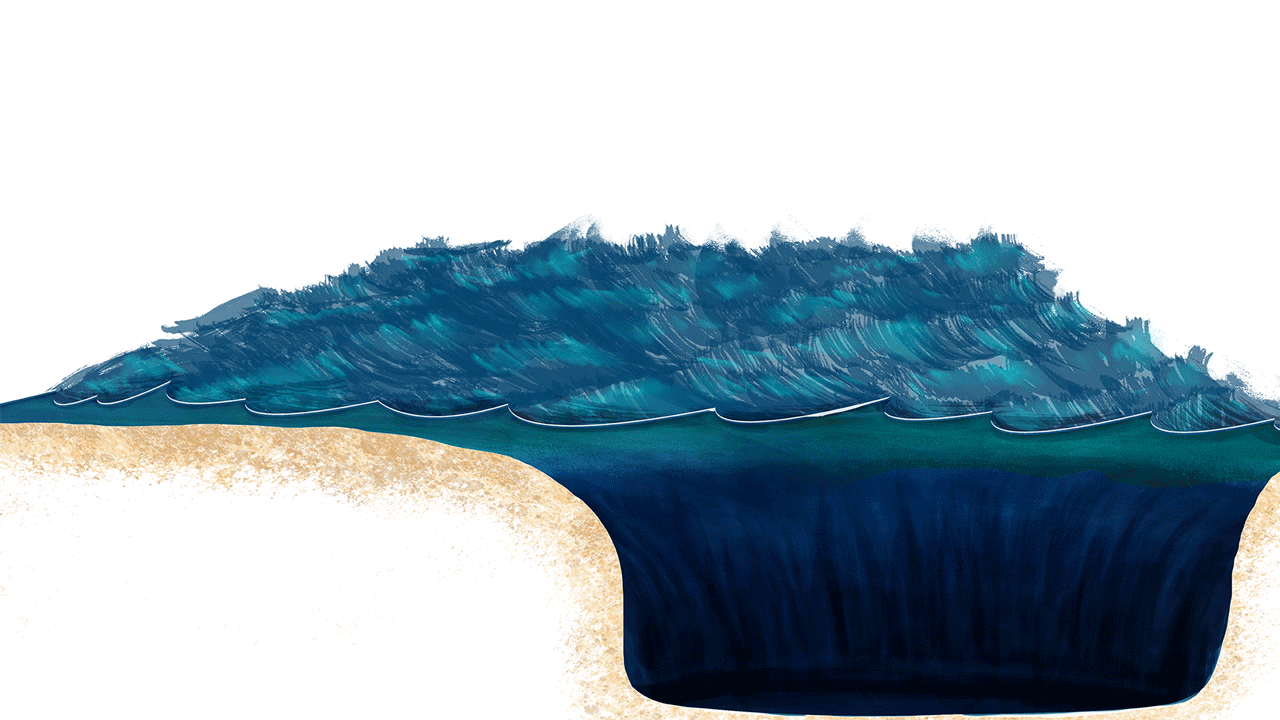
Hurricanes generate strong winds and waves that displace and transport sandy material into muddy environments. We hunt for these sandy layers using sediment cores from coastal basins and figure out when hurricanes hit a location over thousands of years. Our work takes us from coastal marshes to blue holes in the Bahamas. (Graphic by Natalie Renier)
We recently generated some of the first long high resolution (annual to near-annual) paleohurricane reconstructions of the past two millennia from blue holes on: South Andros, Middle Caicos, and Long Island. All three records captured century-scale periods of elevated hurricane activity, like nothing we’ve seen in the modern, followed by periods of relative quiescence. An important takeaway from comparing these blue hole records is that neighboring islands capture different populations of storms, and thus no single island record can be used to reconstruct regional hurricane climate. Instead, we create regional compilations of published paleohurricane records in the Atlantic. These compilations indicate regional heterogeneity in tropical cyclone strikes with the Bahamas and New England capturing similar patterns of storm activity that contrast with activity reconstructed in the Gulf of Mexico.
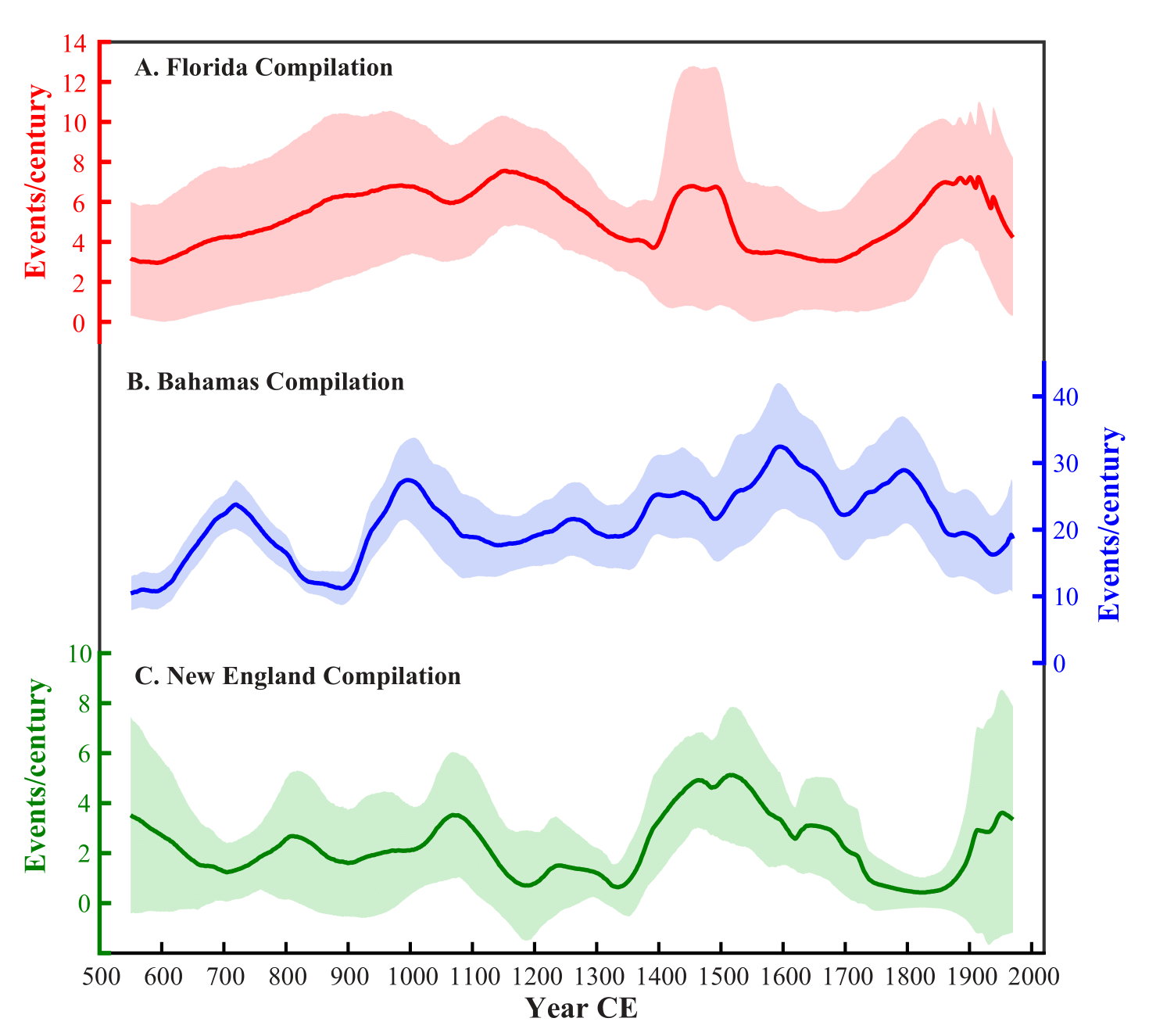
Paleoclimate Data Model Comparison
Do individual paleohurricane records capture climate variability or random variability?
Very little work has been done to integrate paleohurricane records with existing tropical cyclone models. Our lab works with both paleohurricane proxies and climate models to do the much-needed work integrating tropical cyclone models with existing paleohurricane records in a two-way conversation.
We traditionally assume that the variability in paleohurricane records reflects large scale climate. We tested this assumption by creating pseudo records of paleohurricane activity using synthetic storm data and a proxy system model of how the passage of each storm is documented in a sediment record. Our pseudo records replicated centennial-scale variability found in published paleohurricane records, and yet I proved that the majority of this variability is due to randomness not climate.
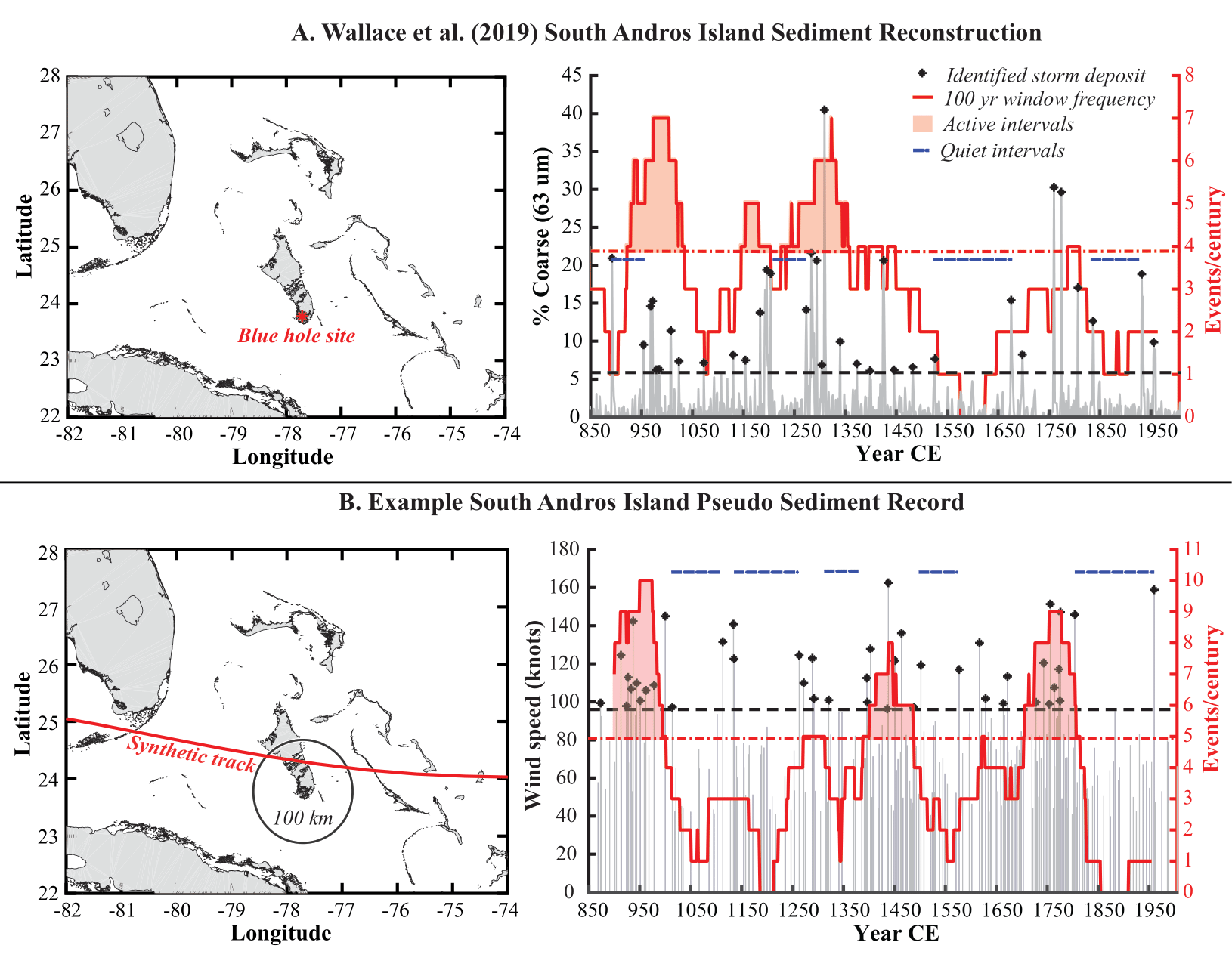
How well can a network of paleohurricane proxies capture basin-scale changes in storms?

We devised pseudo proxy networks to assess the skill of compilations of paleohurricane proxies in capturing low frequency variability in North Atlantic tropical cyclone statistics. We found that current network of sites captures long term changes in basin-wide tropical cyclone frequency, but we need more sites from U.S. Southeast to capture tropical cyclones that impact the U.S. East Coast.
To extend this work, we currently developing our own proxy system models to statistically represent the collective influence of randomness, age uncertainty, and geologic processes on paleohurricane reconstructions. These models allow us to characterize the climate signal captured in each existing paleohurricane record in the North Atlantic.
NSF P2C2 2022-2024: Assessing Climate and Stochastic Forcing of North Atlantic TC Activity over the Past Millennium
Our lab has its first National Science Foundation (NSF) proposal funded!! For the next two years, we are going to be working tropical cyclone modelers and climate dynamicists at Rice University, Princeton University, and MIT to investigate the following two questions: 1) How does large-scale climate variability impact tropical cyclone activity on decadal and longer timescales in the model world; and 2) What is the capacity of paleohurricane records to inform our understanding of these climatic controls on tropical cyclone activity in the real world?
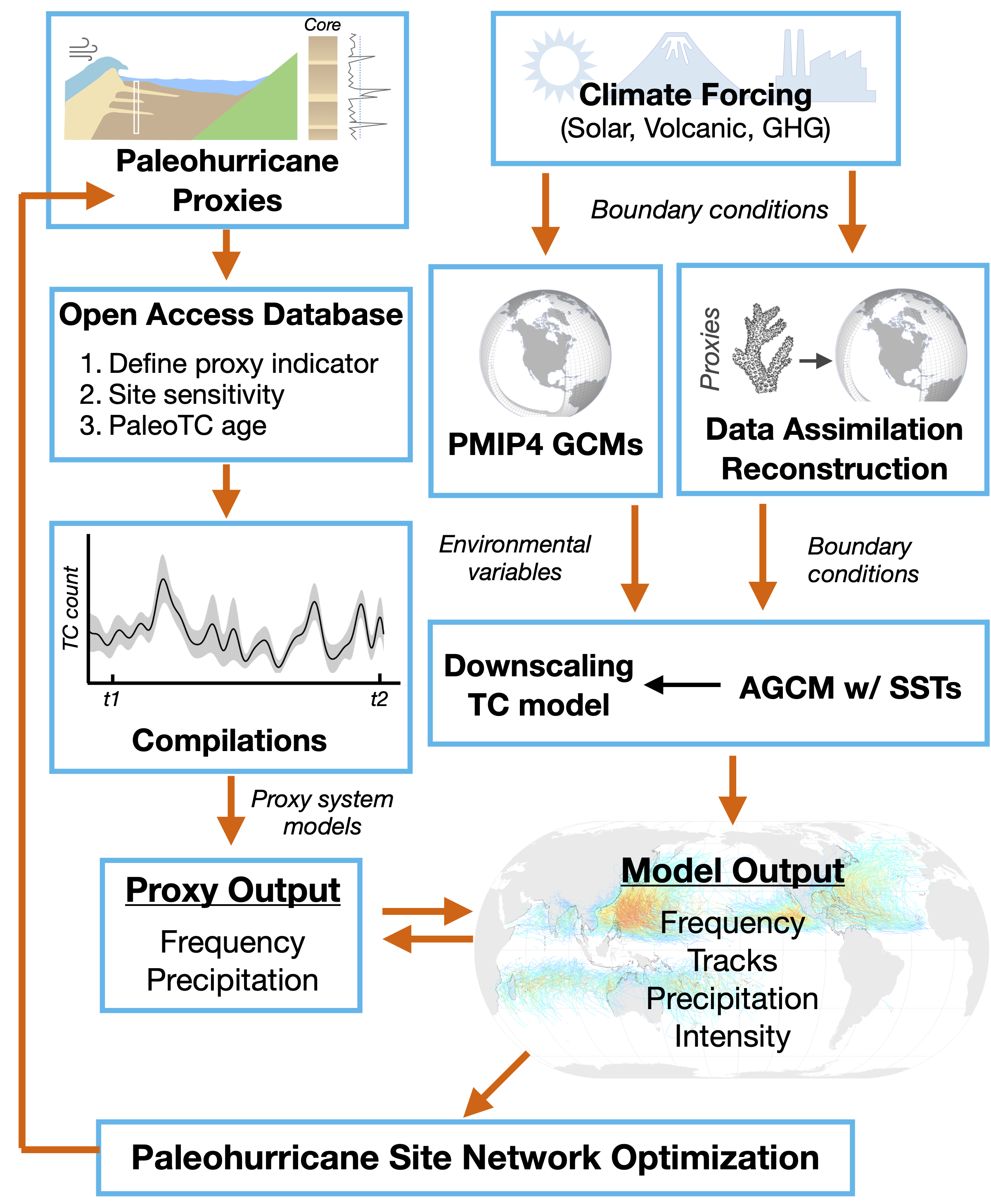
COASTAL WETLAND RESEARCH
Coming soon…
Coastal wetlands are rapidly declining in the U.S. The relative importance of climate changes (e.g., temperature, salinity) versus human modification (i.e., built environment, dams) on coastal wetland decline is poorly understood. My lab will collect sediment cores from coastal wetlands locally in Virginia to study how wetlands respond to human modification, sea level rise, and high energy events over the past millennium
